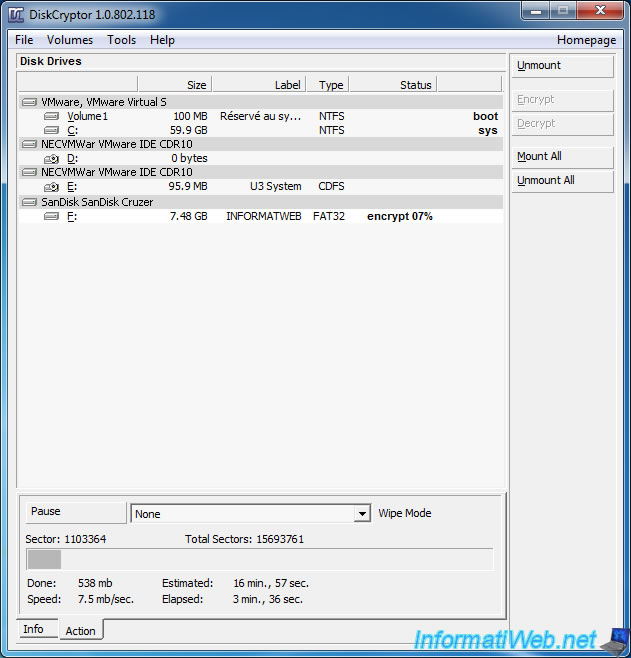Portable mode will be realized together with container's support as they can be mounted without driver installation. Currently DiskCryptor supports volumes and driver installation is obligatory (administrator rights required) and the following restart (it is possible to load driver without rebooting, however in this case filter can be assigned. DiskCryptor DiskCryptor is often referred to as an open source alternative to Bitlocker if you don’t have a Bitlocker capable Windows, and with compatibility from Windows 2000 up to Windows 8.1/Server 2012, it’s certainly more compatible than Bitlocker.
• Available in English Website DiskCryptor is a free and open-source system for. It allows for the of a 's entire or individual – including the ability to encrypt the partition and disk on which the is installed.
DiskCryptor was originally designed to replace commercial disk encryption systems such as DriveCrypt Plus Pack and PGP Whole Disk Encryption, and uses either -256,, or a combination of algorithms in to carry out encryption. The project was originally started by a former user and forum member who goes by the name of 'ntldr' (anonymous).
According to the developer, it was originally fully compatible with TrueCrypt's container format as it used a corresponding partition format and encrypted data with AES-256 algorithm in LRW mode. However, according to the software's website, has since improved on the format in order to allow data-in-place encryption on, to allow the system partition to have exactly the same format as non-system partitions and to support future project plans. Contents • • • • • • • • Program features [ ] • Support for encryption algorithm,,, including their combinations.
• Transparent encryption of disk partitions. • Full support for dynamic disks.
• Support for disk devices with large sector size (important for operation). • Performance claimed to be comparable to efficiency of a non-encrypted system. • Support for hardware AES acceleration: • on recent Intel and AMD CPUs; • on VIA processors.
![]() • Support for the • Broad choice in configuration of booting an encrypted OS. Support for various multi-boot options. • Full compatibility with third party boot loaders (,, etc.).
• Support for the • Broad choice in configuration of booting an encrypted OS. Support for various multi-boot options. • Full compatibility with third party boot loaders (,, etc.).
• Encryption of system and bootable partitions with pre-boot authentication. • Option to place boot loader on external medium and to authenticate using the key medium. • Support for key files. • Full support for external storage devices.

• Option to create encrypted CDs and DVDs. • Full support for encryption of external USB storage devices. • Automatic mounting of disk partitions and external storage devices. • Support for hotkeys and optional command-line interface (CLI). • Open license.
• Where did we hit (or miss) our objectives? More than a casual conversation about what did and didn’t work, a debriefing digs into why things happened. Review your results, and ensure the group is aligned. Start by restating the objectives you were trying to hit. It should review four key questions: • What were we trying to accomplish? Post incident debrief templates.
For limitations in the current version, as well as other technical information, see. Encryption algorithms [ ] • -256 • • All algorithms are implemented in XTS mode. Hash function [ ] • prf HMAC- Performance [ ] On an Intel Core 2 Quad (Q6600) CPU data encryption speed amounts to 104 MB/s per core. Crypto-algorithms for the x86 version are implemented in assembly language, the implementation having a maximum number of optimizations for the Intel Core line of processors, however it performs sufficiently fast on any other processor as well. [ ] Almost all possible enhancements to improve the performance have been applied such as the AES algorithm code is being dynamically generated with optimization made for the usage of a particular key. Supported OS [ ] XP SP0–SP3 x86, x64 Server 2003 SP0–SP2 x86, x64 Vista SP0–SP2 x86, x64 Server 2008 SP0–SP2 x86, x64 7 SP0–SP1 x86, x64 Server 2008 R2 x64 8, 8.1 x86, x64 Server 2012 x64 10 x86, x64 See also [ ].
